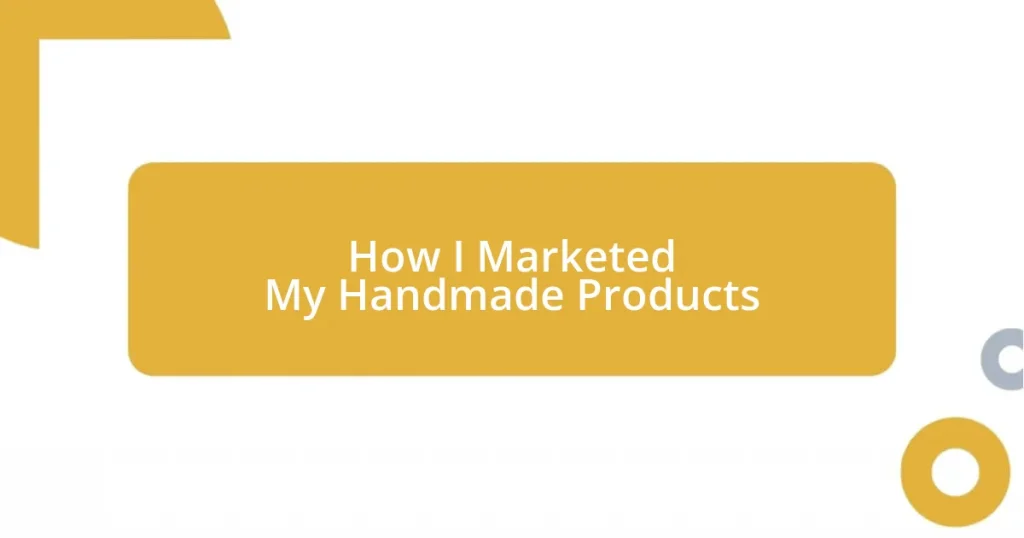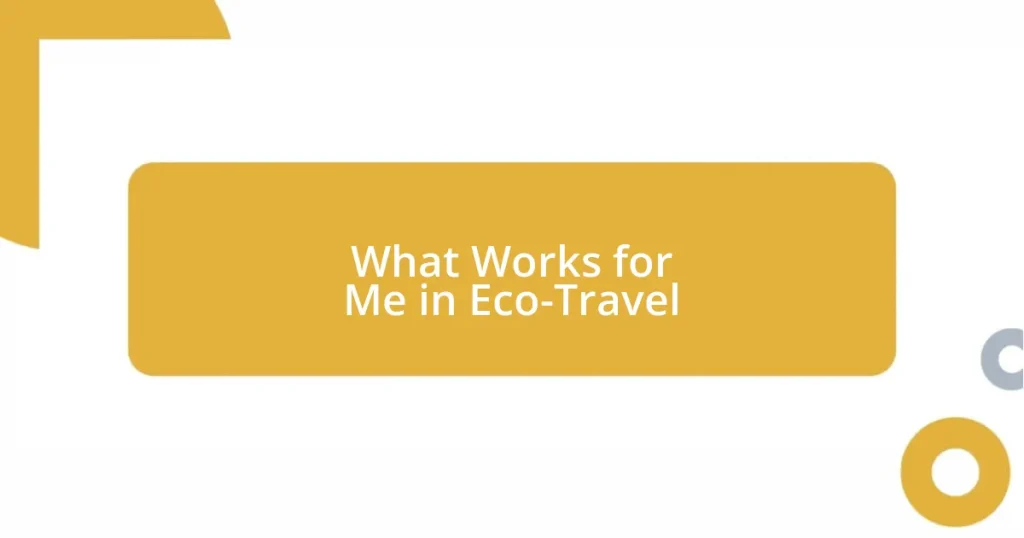Key takeaways:
- Understanding your target audience helps tailor products and build community, enhancing customer loyalty through direct engagement.
- Setting up an online store requires careful selection of platform, engaging visuals, detailed descriptions, and SEO optimization for effective visibility.
- Social media marketing and collaborations with influencers can significantly increase brand visibility and foster emotional connections with audiences.
- Email marketing strategies, including segmentation and personalized offers, create deeper customer relationships and encourage repeat sales.
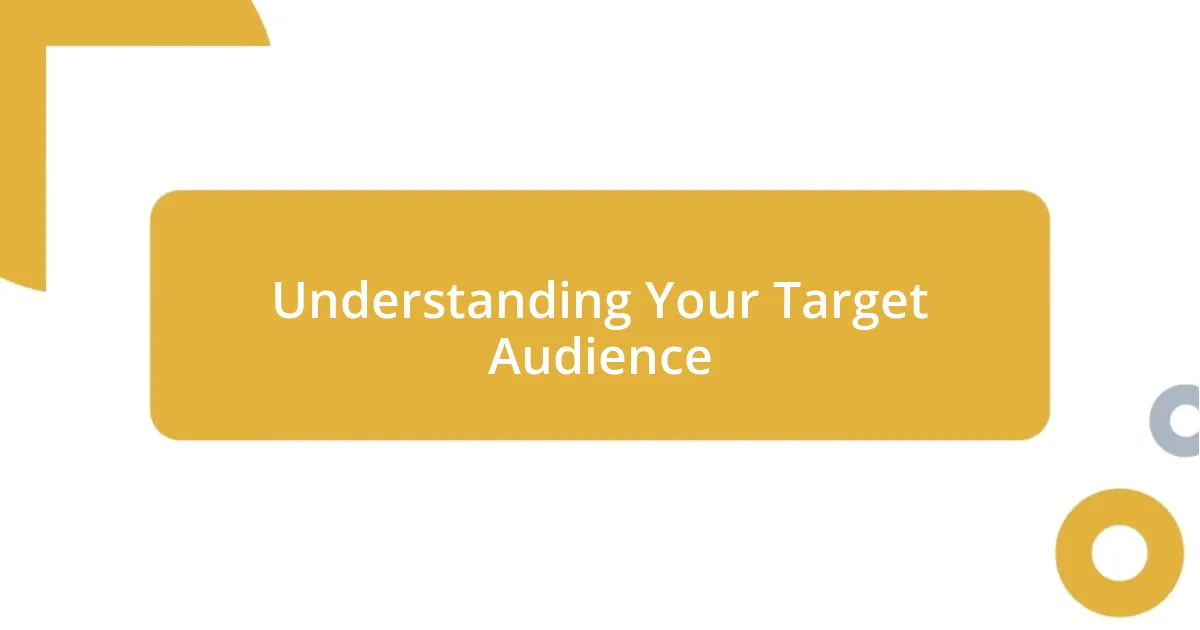
Understanding Your Target Audience
Understanding your target audience is a pivotal step that can significantly shape your marketing efforts. I remember when I first launched my handmade jewelry line; I assumed that everyone would love what I created. However, it quickly became evident that the designs resonated more with a specific age group who valued unique, personalized pieces. This realization pushed me to delve deeper into their preferences.
Have you ever wondered what truly drives your customers to make a purchase? I found out that my target audience appreciated eco-friendly materials and artisanal crafting techniques. By connecting with them on these points, I cultivated a sense of community and loyalty. It’s like having a conversation where you genuinely listen and respond, which keeps them coming back.
Asking questions about your audience’s interests can be incredibly revealing. I often turned to social media polls and direct messages, learning not just about their favorite colors but also their lifestyle choices. This practice not only informed my product development but also fostered a warm connection that felt more personal. It was as if I was tailoring my offerings to fit into their lives, rather than presenting something they needed to fit into.
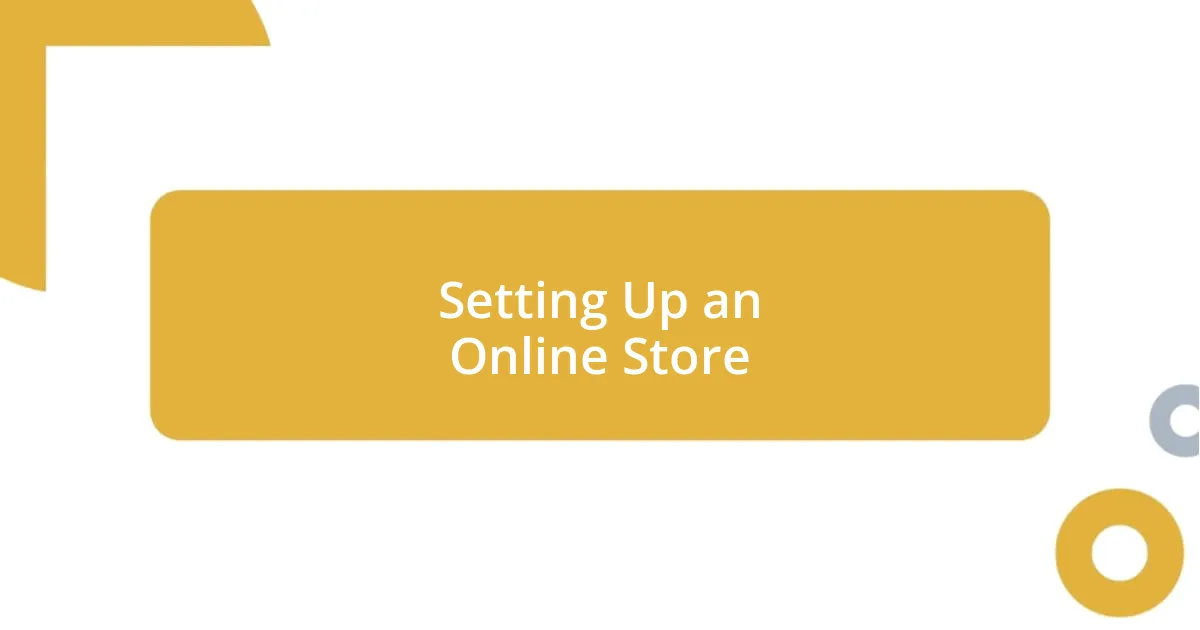
Setting Up an Online Store
Setting up an online store is an exhilarating yet daunting task. I still recall the day I clicked “publish” on my website. It felt a bit like standing on a stage, offering my creations to the world for the first time. I had to nail down the right platform; I chose Etsy because of its vibrant community for handmade goods, but there are many options like Shopify and WooCommerce that you can explore depending on your business model.
Here are some crucial factors to consider when establishing your online store:
- Choose the Right Platform: Research and select a platform that aligns with your product type and target audience.
- Craft a Compelling Storefront: Invest time in creating a visually appealing layout that represents your brand’s spirit.
- High-Quality Photos: Capture clear, well-lit images of your products; they convey quality and attract customers.
- Detailed Product Descriptions: Use enticing, honest descriptions that showcase the uniqueness of each item.
- SEO Optimization: Incorporate relevant keywords to improve your store’s visibility in search engines.
- Shipping Options: Clearly outline your shipping policies and provide multiple options to enhance customer convenience.
Each element contributes to the overall user experience, creating a space where customers feel excited to explore your handmade offerings. The balance of aesthetics and functionality is critical; I learned this when I had to rethink my website design after receiving feedback—sometimes, you need to listen to your visitors to enhance their shopping journey.
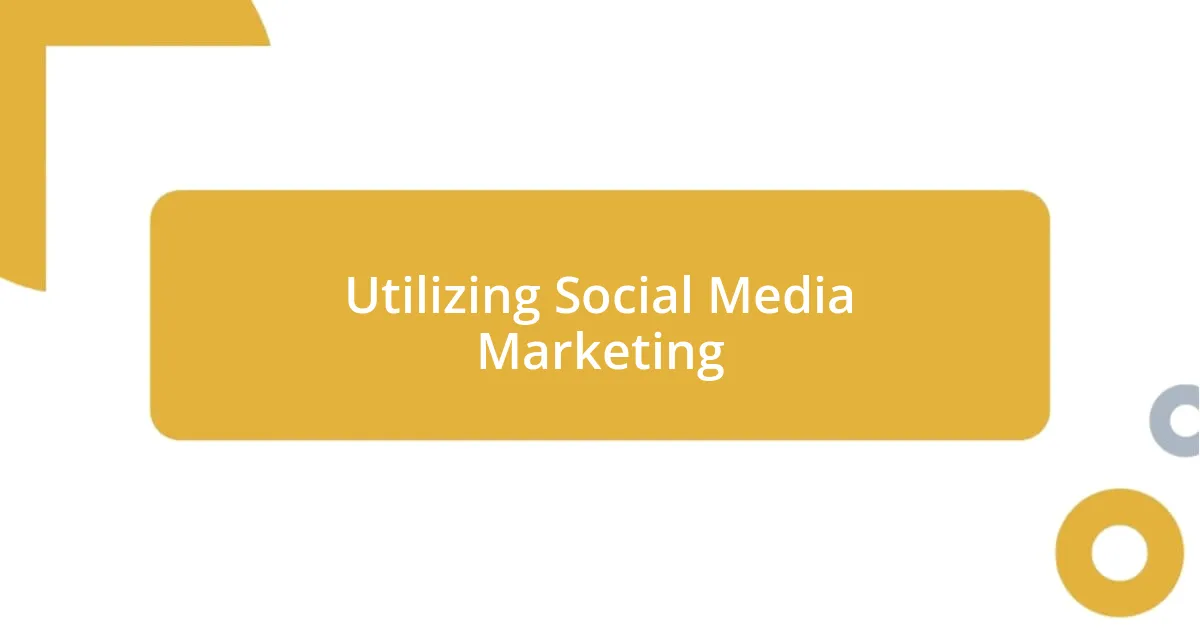
Utilizing Social Media Marketing
Utilizing social media marketing has been a game-changer for my handmade product business. Initially, I felt overwhelmed by all the options out there, unsure of where to focus my efforts. But once I dived into platforms like Instagram and Pinterest, I quickly understood the power of visual storytelling. I began sharing behind-the-scenes glimpses of my crafting process, which not only showcased my products but also created a personal connection with my audience. It was like inviting people into my workshop, allowing them to feel part of my journey.
One strategy that worked wonders was engaging with my followers consistently. I started responding to comments and messages promptly, which fostered a sense of community. I recall one specific interaction with a customer who shared how my earrings added a special touch to her wedding outfit. This genuine exchange not only made my day but also inspired me to create a dedicated collection for special occasions. Such emotional connections are invaluable—they turn a simple purchase into a meaningful experience.
Additionally, I found that leveraging user-generated content enriched my social media presence. Encouraging customers to share photos of themselves wearing my handmade pieces not only provided me with authentic content but also made them feel like part of a family. I remember featuring a loyal customer on my page, showcasing her in my necklace. The smile on her face lit up my feed and drove other followers to engage. This dynamic helped me build trust and credibility, ensuring my products stood out in a crowded marketplace.
| Social Media Platform | Advantages for Handmade Products |
|---|---|
| High visual appeal; perfect for sharing craft process and products | |
| Long-lasting visibility; great for driving traffic to your online store |
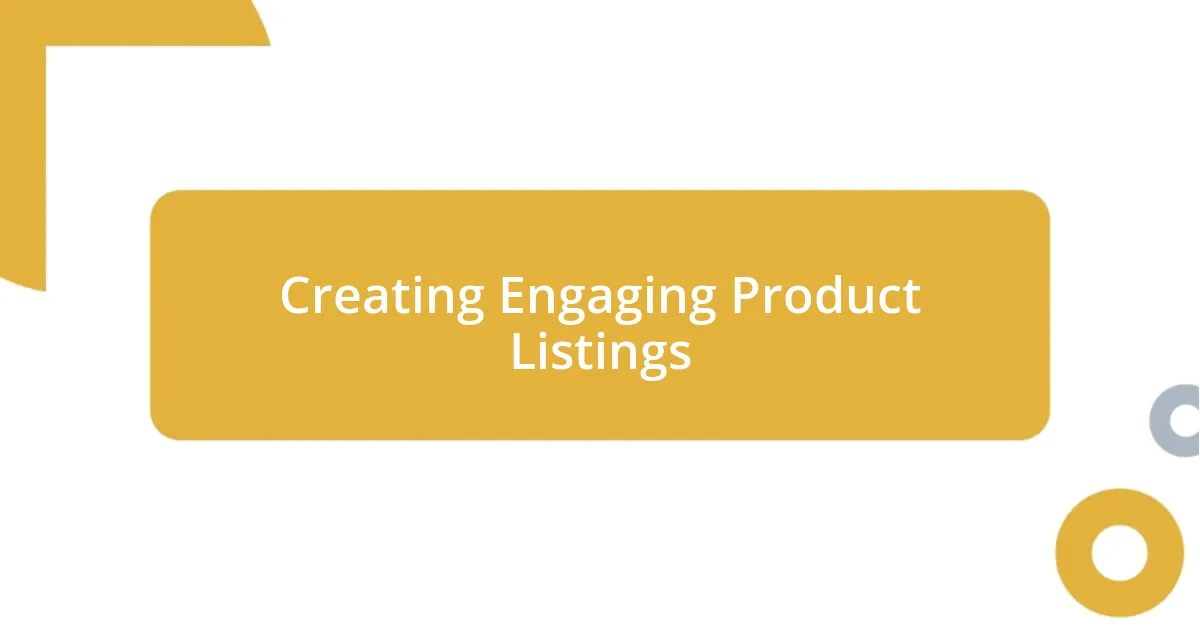
Creating Engaging Product Listings
Creating engaging product listings is a crucial step in attracting customers to my handmade products. I remember when I first started, I poured my heart into detailed descriptions, but I also learned the importance of storytelling. For instance, instead of simply stating that a necklace was made with turquoise beads, I described how the colors were inspired by sunlit beaches and how wearing it could evoke a sense of wanderlust. This approach transformed my listings from a list of features into an invitation to experience my creations.
High-quality photos play a significant role in my product listings as well. I can’t stress enough how investing in professional photography made a difference. In earlier pictures, I’d used my phone’s camera but found it didn’t capture the vibrancy of my products. After a local photographer helped me stage my items with beautiful backdrops, the difference was astounding. My earrings looked more inviting, and I frequently received comments from customers marveling at the images, asking where they could get similar ones.
Lastly, don’t underestimate the power of customer reviews. When I started featuring testimonials directly in my listings, it added a level of trust that was invaluable. One customer wrote about how much she cherished her custom bracelet because it reminded her of her late grandmother. I found that such heartfelt stories resonated with potential buyers, creating an emotional connection. Who doesn’t want to be part of a story that touches their heart? By weaving together stellar descriptions, captivating visuals, and real experiences, my product listings became a magnet for curious customers.
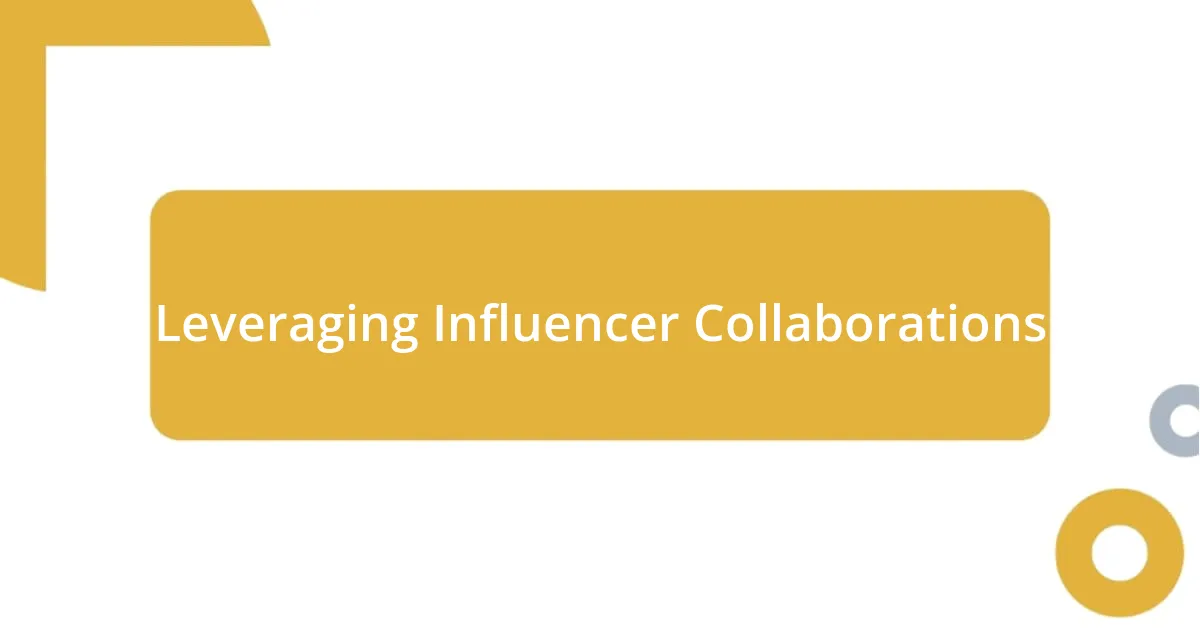
Leveraging Influencer Collaborations
I discovered the real magic of influencer collaborations when I teamed up with a local artist who had a vibrant following on social media. The moment she shared a video of herself using my handmade items in her creative projects, I felt a surge of excitement. It wasn’t just her endorsement that mattered; her genuine passion for my products shone through the screen, resonating with her audience and amplifying my visibility. Have you ever experienced a moment where everything seems to align perfectly? That was it for me.
What I found fascinating was how these collaborations allowed me to tap into entirely new audiences. After one successful partnership, I received countless messages from people who had never heard of my brand before. I’ll never forget the day I noticed a spike in sales after an influencer shared her thoughts on my handcrafted jewelry. It felt as though my little creations had crossed a bridge into a world I could hardly reach on my own. The power of influencer marketing is real—it opens doors to communities you might not have considered.
Furthermore, authenticity in these partnerships is paramount. I remember joining forces with a fashion blogger who genuinely loved my products, and we took our collaboration a step further by hosting a giveaway. The excitement from her followers was palpable, and it brought an incredible sense of community. When influencers engage authentically, they not only share your brand but also create a buzz that elevates your reputation. Isn’t it thrilling to see your work appreciated by others on a larger scale? That feeling inspires me to keep creating and connecting.
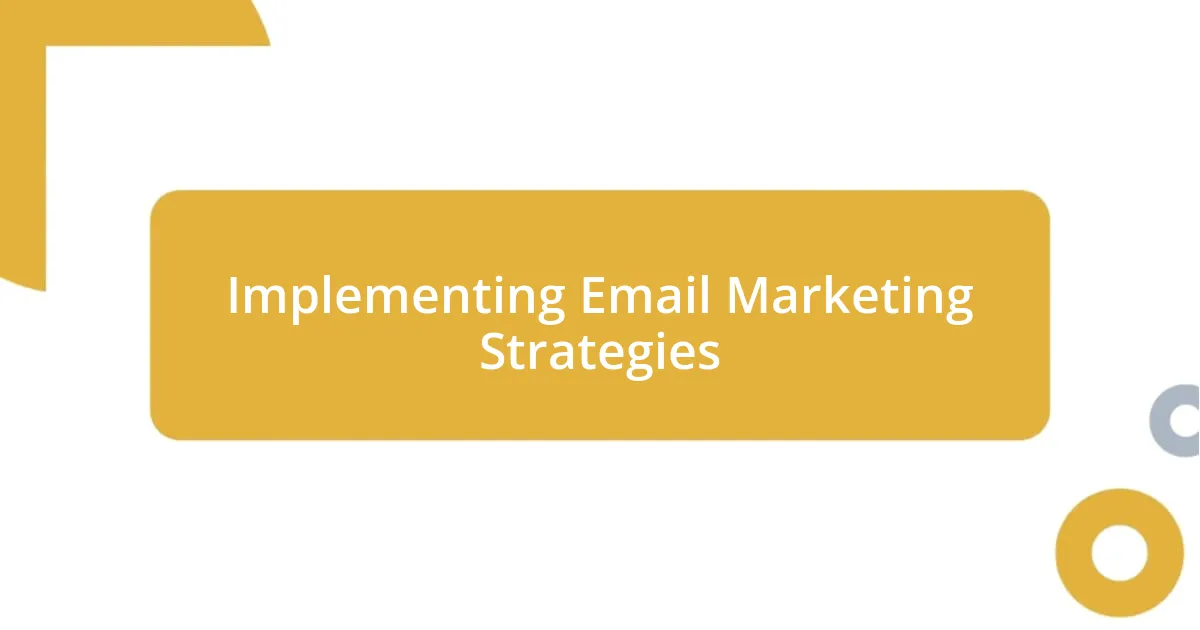
Implementing Email Marketing Strategies
Implementing an email marketing strategy transformed the way I connected with my customers. I vividly remember feeling overwhelmed the first time I crafted my newsletter. I poured my heart into it because I really wanted to share not just updates but also the stories behind my products. I included behind-the-scenes glimpses of my creative process, and to my delight, I received heartfelt replies from customers who felt a deeper connection to my work. Isn’t it incredible how sharing a slice of your journey can create a bond with your audience?
Another critical aspect was segmenting my email list, which I learned from trial and error. By categorizing subscribers based on their interests and purchase history, I could tailor my messages for maximum impact. For example, when I launched a new line of eco-friendly jewelry, I reached out specifically to customers who had previously bought similar products. The response was overwhelmingly positive, illustrating that targeted emails can yield better engagement. Have you ever considered how personalizing your communication can change the way people perceive your offerings?
I also experimented with exclusive offers for my email subscribers, and that’s where the excitement peaked. I created a special discount just for them, and the influx of responses was invigorating. One day, I noticed someone wrote, “I feel like I’m part of an exclusive club!” That sense of belonging not only drives sales but also fosters loyalty among customers. In a crowded marketplace, where handmade products are plentiful, establishing an emotional connection through email marketing can genuinely elevate your brand. Wouldn’t you agree that making your customers feel special is a surefire way to keep them coming back for more?
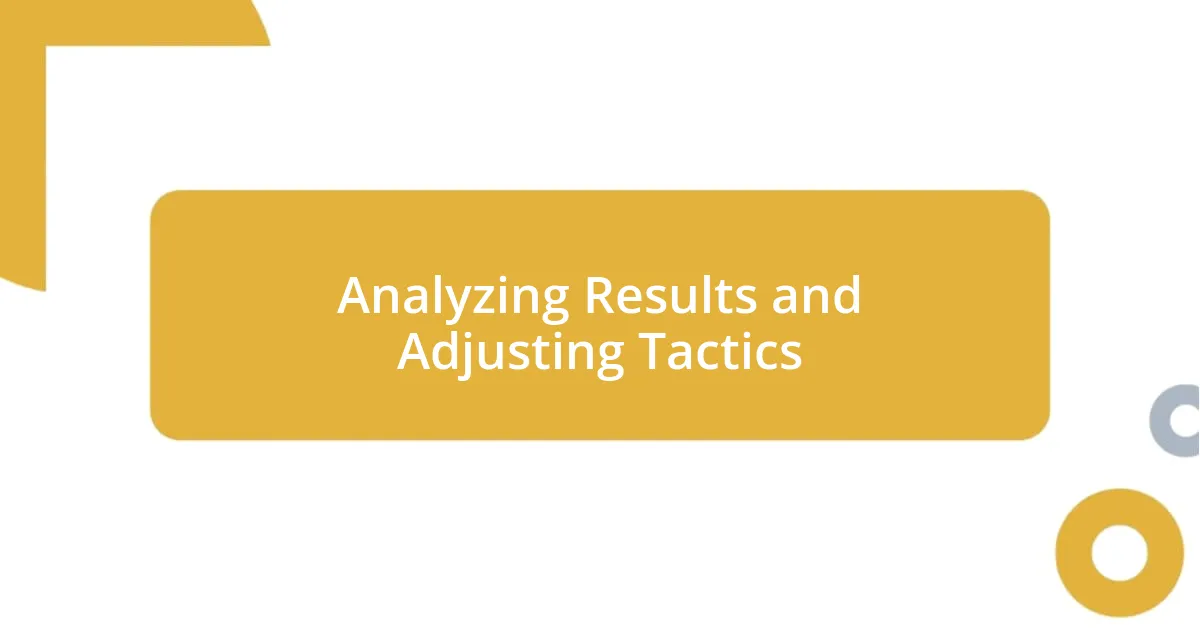
Analyzing Results and Adjusting Tactics
After implementing various marketing strategies, I understood the importance of analyzing results to refine my approach. When I looked at my sales data post-campaign, I noticed trends that both surprised and excited me. For instance, one month, I tracked a significant uptick in purchases of my handcrafted home decor around certain holidays. Isn’t it fascinating how timing can play such a crucial role in sales? This insight led me to align future product launches with seasonal events, maximizing my potential reach.
I also started paying close attention to customer feedback. I vividly recall the day I read through replies to my social media posts. A common theme emerged: customers loved when I shared the stories behind my creations. This revelation was instrumental in adjusting my content strategy. Have you ever felt that moment when feedback turns into a lightbulb moment? I shifted my focus to storytelling, enriching my social media presence with the backstory of each piece I created. This not only connected me to my audience but also elevated my brand narrative.
Every so often, I conduct A/B testing on different promotional strategies. For example, I tried two distinct email subject lines for a recent sale, and the results were eye-opening. One line generated double the opens than the other! As I embraced these insights, I felt a sense of empowerment, knowing that each small adjustment could lead to significant improvements. Isn’t it exciting to see how tweaking your tactics can lead to real growth? By consistently analyzing and adapting my strategies, I’m able to keep my brand dynamic and responsive to my audience’s desires.










